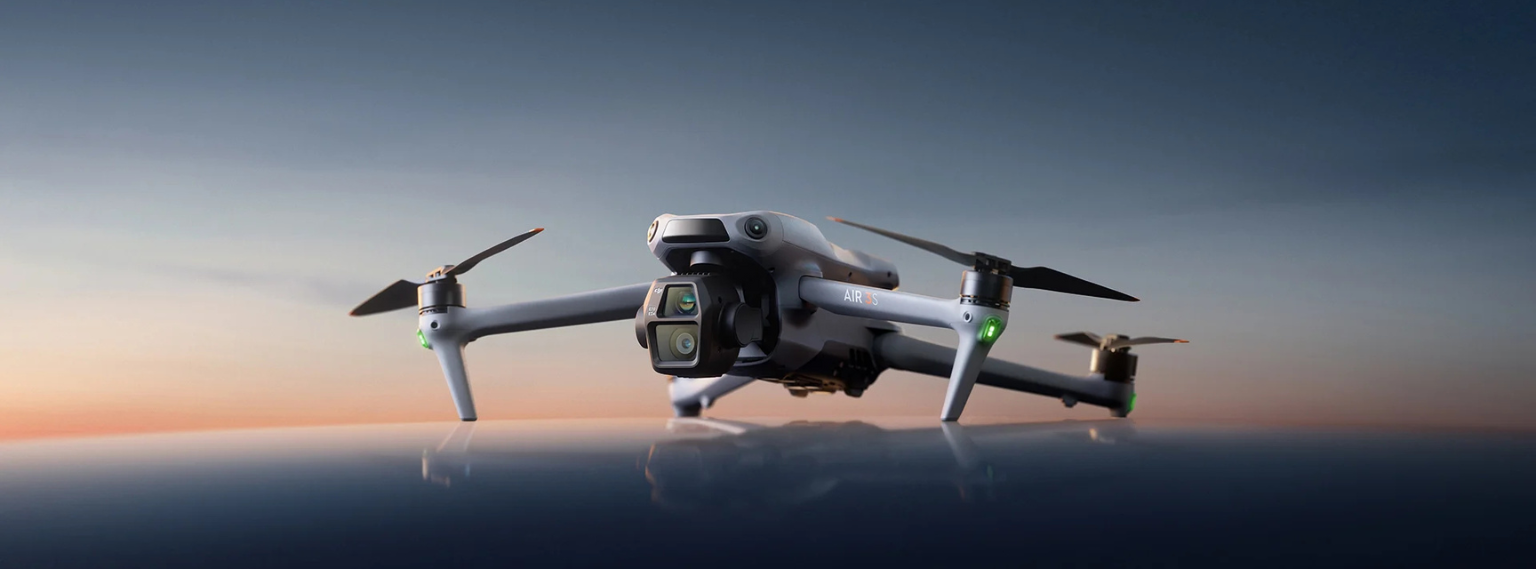DJI has long been at the forefront of drone technology, and with each new release, it raises the bar in terms of features, performance, and user experience. The DJI Air 3 and DJI Air 3S are two popular models in DJI’s mid-tier drone lineup, and while they may seem similar at first glance, they have unique differences that can significantly impact your decision depending on your needs. In this blog post, we’ll compare the two models, diving into their key features, specifications, and performance to help you make an informed decision.
1. Design and Build Quality
Both the DJI Air 3 and DJI Air 3S feature a sleek, foldable design, making them highly portable and easy to carry around for on-the-go creators. They have a sturdy build that feels premium yet lightweight, which is a hallmark of DJI’s engineering. While the overall look and dimensions are similar, the DJI Air 3S is slightly heavier due to its larger battery and enhanced gimbal system.
- DJI Air 3: 720g
- DJI Air 3S: 760g
This small difference in weight may be negligible for most users, but if you’re looking for the lightest option for travel or longer flight times, the Air 3 might appeal to you more.
2. Camera Capabilities
For many drone users, the camera is the most critical feature, and both the Air 3 and Air 3S deliver excellent results. However, the DJI Air 3S takes things up a notch, particularly for professional videographers and photographers.
- DJI Air 3: Equipped with a 1/2-inch CMOS sensor, the Air 3 captures 48MP stills and can record up to 4K video at 60fps. This is more than sufficient for most casual users and hobbyists who want to capture high-quality aerial shots.
- DJI Air 3S: The Air 3S, on the other hand, features a larger 1-inch CMOS sensor, which provides better low-light performance, more dynamic range, and superior image clarity. It also supports 5.4K video recording at 30fps, offering a significant boost in resolution and detail for content creators looking to push the boundaries of aerial videography.
3. Flight Time and Battery Life
Battery life is a critical factor when choosing a drone, and DJI continues to improve flight times with each iteration.
- DJI Air 3: Offers up to 38 minutes of flight time on a single charge.
- DJI Air 3S: Offers slightly longer flight time, with up to 42 minutes per charge, thanks to a larger battery capacity.
While the 4-minute difference may not seem like a huge jump, for professionals capturing complex shots or surveying large areas, every extra minute in the air can make a difference.
4. Performance and Flight Features
In terms of performance, both drones are highly capable, offering OcuSync 3.0 transmission technology, which provides reliable connectivity with the controller over distances of up to 12 km (7.5 miles). This ensures a strong, lag-free video feed even when the drone is flying far from the operator.
Both the DJI Air 3 and Air 3S feature:
- Advanced obstacle avoidance sensors on all sides.
- Intelligent flight modes like ActiveTrack, Point of Interest, and Waypoints, which allow for creative, automated shots.
However, the DJI Air 3S features improved obstacle detection and smarter AI-assisted flight modes, making it easier to fly in complex environments where avoiding obstacles is key.
5. Price
Pricing is always a consideration, and while both drones are in the mid-range category, the DJI Air 3 is more affordable than the Air 3S. This price difference reflects the enhanced features and camera capabilities of the Air 3S.
If you’re a casual user or hobbyist, the Air 3 offers fantastic value for money. However, for professional videographers, photographers, or anyone looking for top-tier performance, the Air 3S justifies the higher price tag with its superior camera and flight features.
6. Use Case Scenarios
- DJI Air 3: Perfect for hobbyists, travelers, and anyone who wants to capture high-quality aerial footage without breaking the bank. It’s an excellent choice for personal use or casual content creation.
- DJI Air 3S: Designed for professionals or enthusiasts who need the best image quality, enhanced features, and longer flight times. If you’re creating content for commercial use, marketing, real estate, or cinematography, the Air 3S offers the extra power and performance you’ll need.
Conclusion: Which Should You Choose?
The choice between the DJI Air 3 and the DJI Air 3S ultimately depends on your needs and budget. If you’re a casual flyer looking for an affordable yet capable drone for personal projects, the DJI Air 3 will likely meet all your requirements without stretching your wallet. On the other hand, if you’re a professional or serious hobbyist who demands the best in camera performance and flight features, the DJI Air 3S is the clear winner, despite its higher price.
Regardless of your choice, both drones are packed with DJI’s cutting-edge technology, ensuring a fantastic flight experience and stunning aerial footage.


